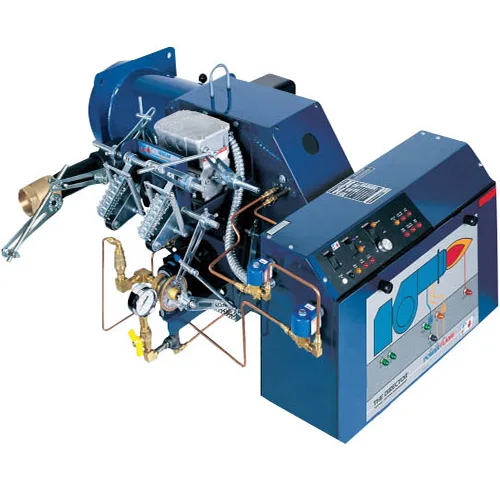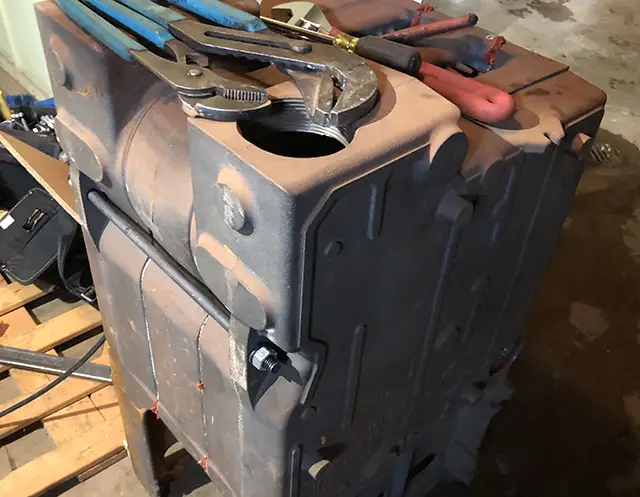Steam Boiler Repair in Chicago
Residential and Commercial Steam Boiler Service
We are a well-established HVAC company based in Chicago, Illinois, known for servicing a variety of boiler and heating systems including Utica, Weil McLain, Peerless, Burnham, US Boiler, HB Smith, Crown, Kewanee boilers and more. We have been serving the Chicago area for over 35 years, and we offer a wide range of services, including installation, repair, and maintenance of steam boilers for homes and businesses.
24
Hour Emergency Boiler Repair Service




A low water cutoff is a safety device used primarily in steam boilers and hot water heating systems to prevent the boiler from operating when the water level falls below a certain point. This device detects low water levels and shuts off the burner or heating element to avoid potential overheating, system damage, or even explosions caused by a lack of water. It plays a crucial role in maintaining safe and efficient operation of heating systems by ensuring the boiler has an adequate supply of water.



Basic
Operating Process
Step 1: Fuel Combustion
The burner ignites the fuel (such as
gas, coal, or oil) in the furnace or
combustion chamber. The combustion
process releases heat energy, raising
the temperature of the surrounding air.
Step 2: Heat Transfer to Water
The heat generated from combustion is
absorbed by the water inside the heat
exchanger (boiler tubes). These tubes
are exposed to hot gases, which transfer
heat to the water, converting it into
steam.
Step 3: Steam Generation
As the water absorbs heat, it gradually
reaches its boiling point, turning into
steam. The steam rises up through the
boiler to the steam drum or separator,
where any excess water is removed to
ensure only dry steam leaves the boiler.
Step 4: Steam Delivery
The steam is then routed through pipes
to the desired destination, such as a
turbine in a power plant, a radiator in
a heating system, or a production
process that requires heat. The pressure
and temperature of the steam are
carefully controlled to meet system
requirements.
Step 5: Condensation (in some systems)
After the steam is used for heating or
powering turbines, it condenses back
into water. The water is then sent back
to the boiler to be reheated, creating a
closed-loop system. In some setups,
cooling towers or heat exchangers are
used to aid in the condensation process.
Step 6: Pressure Control
The steam boiler system is equipped with
pressure and temperature sensors to
maintain proper operation. If the
pressure or temperature gets too high, a
pressure relief valve opens to release
steam and protect the system from
overpressure.
Types
of Steam Boilers
Fire-Tube Steam Boiler: In this type,
the hot gases pass through tubes that
are surrounded by water. The heat from
the gases is transferred to the water,
converting it into steam. These are
commonly used for low- to
medium-pressure applications.
Water-Tube Steam Boiler: In these, water
flows through the tubes, and the hot
gases surround the tubes. Water-tube
boilers are typically used for
high-pressure applications and can
handle more efficient heat transfer.
Electric Steam Boilers: These use
electric heating elements to generate
steam, often used in small-scale or
low-power applications.
Troubleshooting
and Maintenance
Low Water Levels: A low water level can
lead to overheating and failure of a
steam boiler. Automatic low-water
cutoffs are installed to avoid this
problem.
Scaling and Corrosion: Build-up of
minerals can reduce efficiency and
damage components. Regular cleaning and
chemical treatment are necessary.
Leaks: The boiler system is under
pressure, so leaks can be hazardous.
Regular inspection is required.
-
24/7 Boiler Service
-
Chicago Burner Repairs and Maintenance

-
We have been servicing all brands of steam boilers, controls, operating control systems, condensate return pumps, fan coils, low water cut offs and safeties since 1987.

-
-
 Low water
cut-off repair
Low water
cut-off repair - Call us to schedule repairs 773-777-4888
-

- "Perri-Aire is the absolute best! Great customer service, great prices, and top quality work!" Danielle, Google Review
$129.00 HOME STEAM BOILER TUNE-UP
For new customers in and near Chicago.Mention this offer when calling to schedule an appointment for your home boiler tune-up.
Call for rooftop, attic, or commercial service pricing.

-



